Sri Ramakrishna Movement in Rishikesh
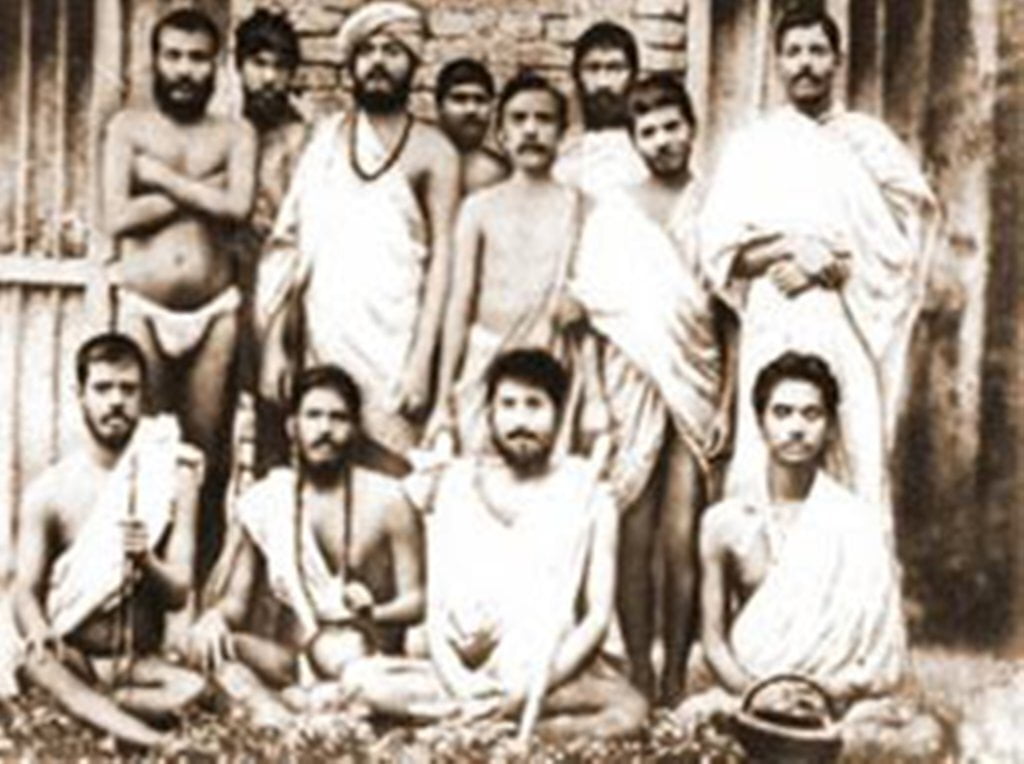
In the early part of twentieth century, (1901-1902) when the two monastic disciples of Vivekananda, Kalyanananda and Nischayananda, had established the Ramakrishna Mission Sevashrama, Kankhal and branch center Rishikesh ,
Visit of Direct Disciples of Sri Ramakrishna and Swami Vivekananda
Visit of Direct Disciples of Sri Ramakrishna and Swami Vivekananda
Swami Vivekananda had explicitly instructed his disciple, Swami Kalyanananda to do something for the monks and other poor people in Kankhal and Rishikesh.
This two famous pilgrimage spots in India, as Swamiji himself had seen the plight of the people there. At that point in time there existed no healthcare facilities for poor in that region.[3] In June 1901 the work was started in a two-room building which housed the beds for the ailing monks, the dispensary and the quarter of Swami Kalyanananda. The latter moved from one location to another searching for the sick monks and brought them to the hospital for treatment free of cost. He would prepare the diets himself, treated the patients with medicines and also did menial work like cleaning and washing of the patients.[3] The fund for the initiative was collected by Swami Swarupananda who begged for the initial amount in Nainitial.[4]
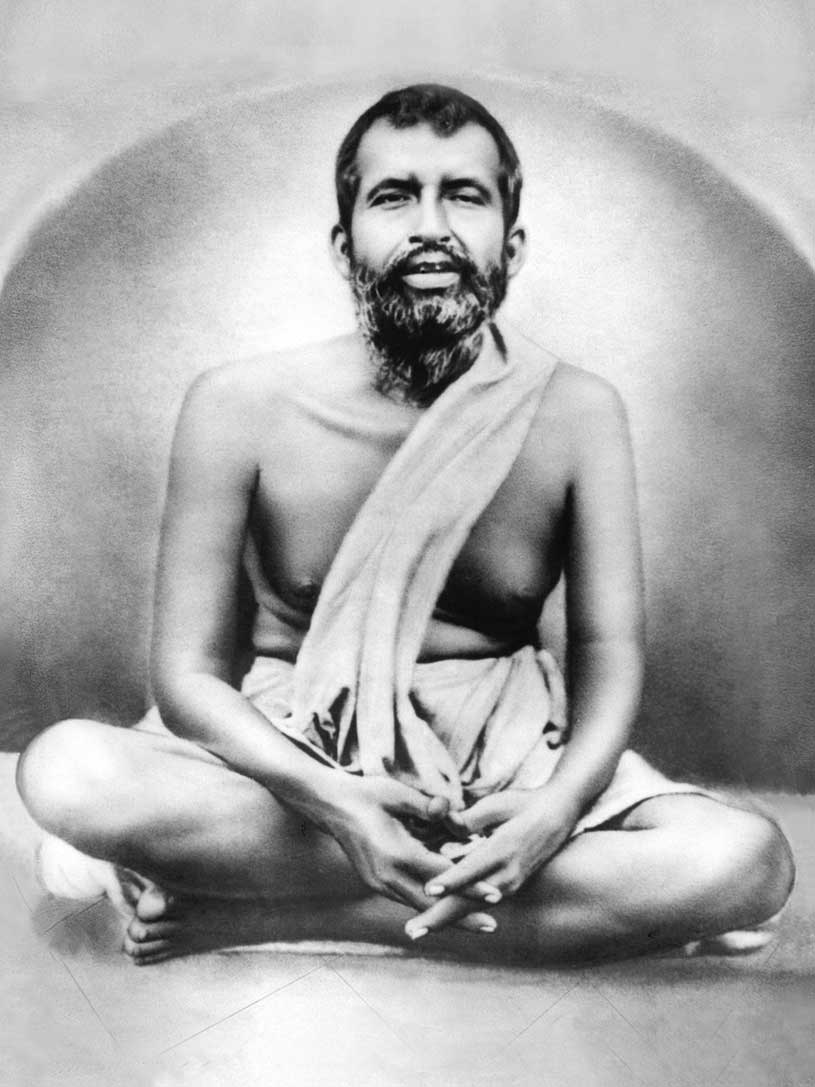
From the first published report of the Sevashrama (published in Prabuddha Bharat, September 1901), 6 monks were treated as indoor patients in September 1901, and there were 48 outdoor patients of whom about 30 were monks and rest poor householders. In 1902, after the demise of Swami Vivekananda, another of his monastic disciples, Swami Nischayananda, joined his brother disciple to run the Sevashrama in Kankhal and branch center Rishikesh .
The sevashrama effort received much help from Swami Dhanraj Giri, the head of Kailash Ashrama. He had sent two rich businessmen, Bhajanlal Lohia and Harsahaymal Sukhdevdas to see the work of the two disciples of Swami Vivekananda. The two gentlemen were impressed by the work and granted financial help for constructing new buildings for the hospital. The plan for the construction was prepared by Swami Vijnanananda.[3]
Gradually the Sevashrama undertook other works like serving pilgrims of Kumbha Mela in Haridwar, educational activities among poor, upliftment of the so-called untouchables and scavengers who did not have any access to schooling. The Ramakrishna Math with temple and monastery served for the spiritual needs.[3]
Visit of Direct Disciples of Sri Ramakrishna and Swami Vivekananda
Visit of Direct Disciples of Sri Ramakrishna and Swami Vivekananda
The Sevashrama was visited by several disciples of Sri Ramakrishna, both monastic and householder. Among the householder disciples the prominent was M or Mahendranath Gupta, the chronicler of The Gospel of Sri Ramakrishna. Swami Brahmananda, the first President of the Ramakrishna Order, visited the Ashrama in 1902 and again in 1912 when he lived here for seven months. He stayed in the Ashrama’s rather small library building. He arranged for the performance of the Durga Puja the Sevashrama which was joyfully attended by all the prominent monks of Haridwar.[5] Other disciples who stayed in the ashrama at different points of time include Swami Turiyananda, Swami Shivananda, Swami Saradananda, Swami Premananda and Swami Abhedananda. Ramlal Dada, the nephew of Sri Ramakrishna, also stayed here. Swami Achalananda and Swami Shuddhananda of Ramakrishna Mission Home of Service, both direct disciples of Swami Vivekananda, had stayed here.[5] Swami Prakashananda (Sushil Maharaj) and Swami Virajananda, two other direct disciples of Swami Vivekananda stayed here for sometime for spiritual practice.[6]
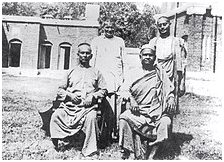
Direct Disciples of Sri Ramakrishna in Kankhal and branch center Rishikesh Sevashrama.
Swami Brahmananda and Swami Turiyananda (both sitting), Swami Shivananda (standing)
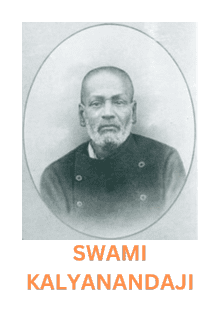
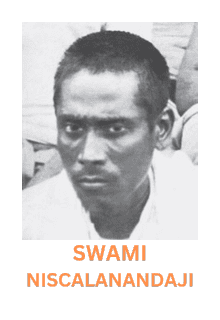
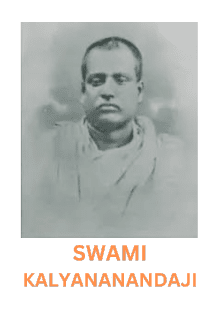
In the early part of twentieth century, when the two monastic disciples of Vivekananda, Kalyanananda and Nischayananda, had established the Ramakrishna Mission Sevashrama, Kankhal and branch center Rishikesh , they faced discrimination in the hands of local orthodox monks for their service to the sick and poor, as such activities were considered of low grade by orthodox monks. Dhanraj Giri, who wielded considerable influence among the monks and who regularly used to feed the monks from his Ashrama, provided full support to the service activities conducted by the two disciples of Swami Vivekananda and gave them special respect and importance in front of all other monks, which gradually ensured the acceptance of their work in the wider community.[7]
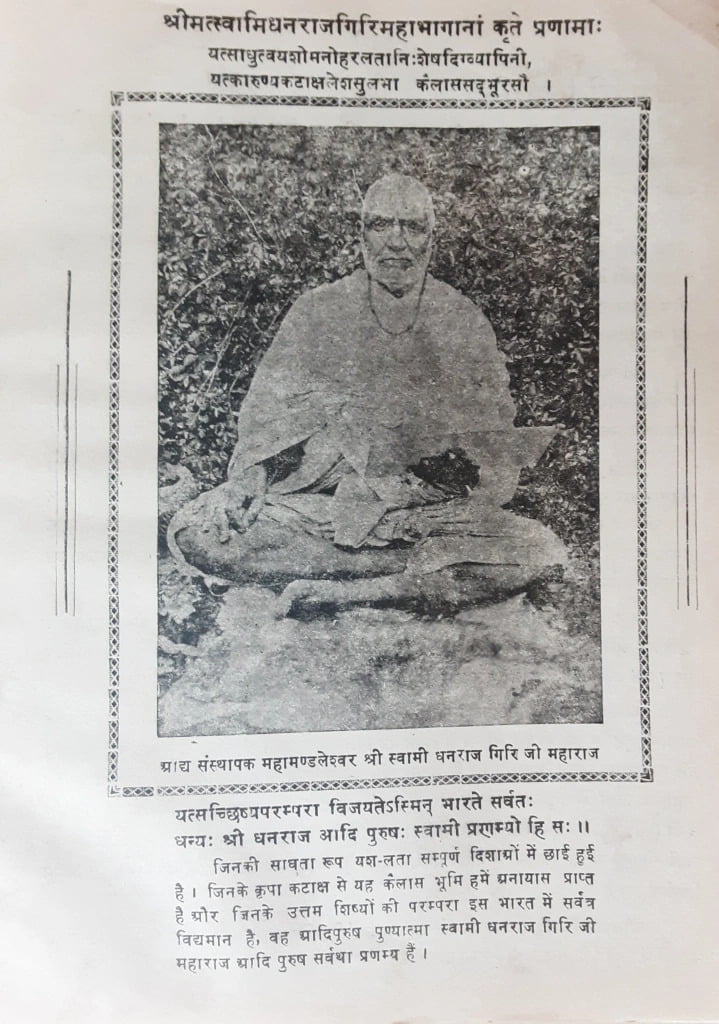
Dhanraj Giri (1811–1901)[1] was the abbot of Kailash Ashram, an ashram, which he established in 1880 at Muni Ki Reti, Rishikesh.[2] It was one of the first large ashrams to be established in Rishikesh, prior to which it was mostly as a place for individual seekers, or pilgrims to stop over on way to Char Dham temples pilgrimage.[3] He was a famous monk in Northern India and was a scholar in Vedanta philosophy. He was well acquainted with spiritual luminaries of nineteenth century India like Swami Vivekananda.
Dhanraj Giri as part of his wanderings had come to Rishikesh from Varanasi and had put up in Surat Giri Bangla ashram in Kankhal and branch center Rishikesh . Subsequently, he started an open-air education centre for Vedanta studies to which many students joined. In 1880, the king of Tehri region granted him a piece of land for setting up an ashram and a university for studying ancient Indian scriptures, especially Vedanta. This monastery came to be known as Kailash Ashram.[4]
Swami Vivekananda, as part of his travels in North India, went to Rishikesh and also went to Kailash Ashrama. Giri was a prominent Advaita Vedantist of the period, and Swami Abhedananda, another prominent monastic disciple of Ramakrishna studied Vedanta in Kailsha Ashrama under Dhanraj Giri as a resident student for many months.[4][5][6]
Swami Vivekananda used to say that Seva work should be started in all the pilgrimage centres. Swami Kalyannanda, who had seen the plight of the Sadhus at Kankhal and branch center Rishikesh for want of medical help, was actively encouraged by Swami Swarupananda to start a Sevashrama there. With one or two assistants he rented a house and began to conduct the Seva work, maintaining themselves by begging. Their unselfishness and devotion soon attracted the notice of a number of charitable men, and through their help a plot of land was secured at Kankhal and branch center Rishikesh in 1902 and some thatched houses were constructed on it. Gradually men and money began to come. Swami Kalyanananda was joined by his brother-disciple Swami Neschayananda, who was his right-hand man till his passing away in 1934. Swami Brahmananda, the first President of the Ramakrishna Order, visited the Sevashrama in 1908 and encouraged the workers by staying with them for a month. From such small beginnings the Kankhal and branch center RishikeshSeva shrama has now grown into a great philanthropic institution.
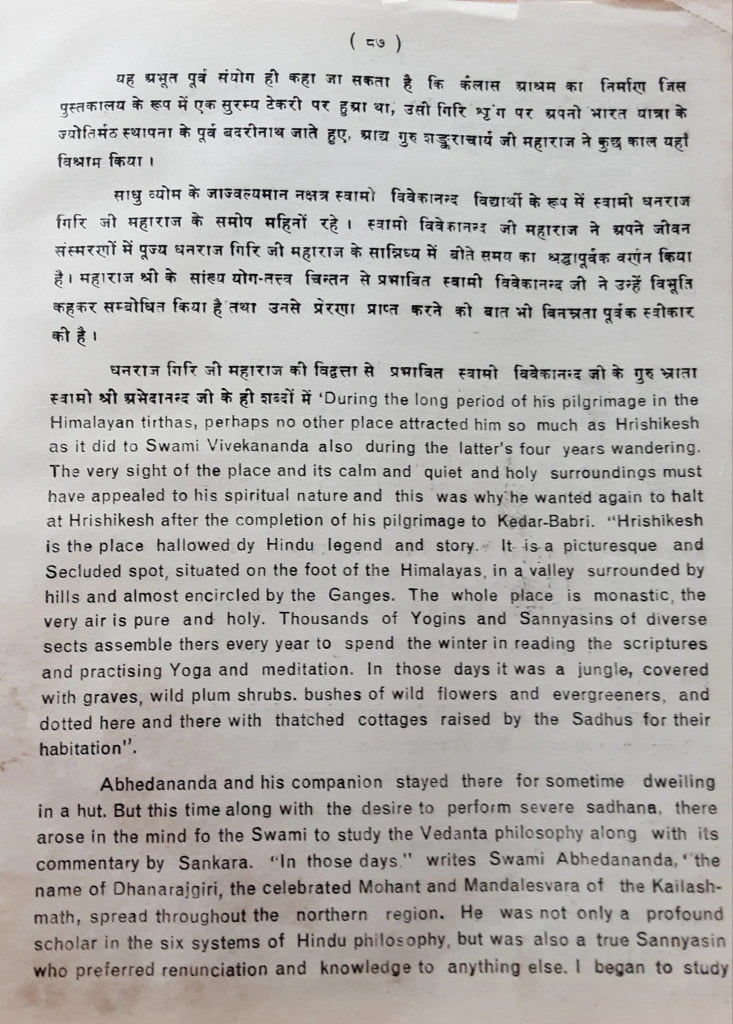
Swami Vivekananda used to say that Seva work should be started in all the pilgrimage centres. Swami Kalyannanda, who had seen the plight of the Sadhus at Kankhal and branch center Rishikesh for want of medical help, was actively encouraged by Swami Swarupananda to start a Sevashrama there. With one or two assistants he rented a house and began to conduct the Seva work, maintaining themselves by begging. Their unselfishness and devotion soon attracted the notice of a number of charitable men, and through their help a plot of land was secured at Kankhal and branch center Rishikesh in 1902 and some thatched houses were constructed on it. Gradually men and money began to come. Swami Kalyanananda was joined by his brother-disciple Swami Neschayananda, who was his right-hand man till his passing away in 1934. Swami Brahmananda, the first President of the Ramakrishna Order, visited the Sevashrama in 1908 and encouraged the workers by staying with them for a month. From such small beginnings the Kankhal and branch center RishikeshSeva shrama has now grown into a great philanthropic institution.
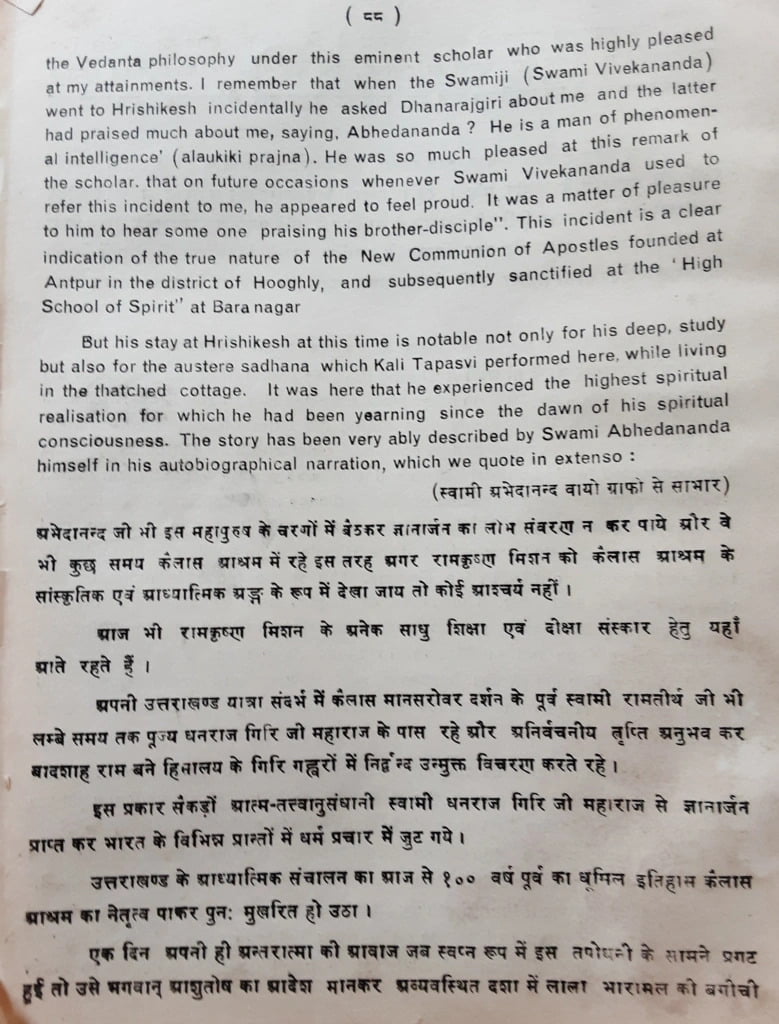
Swami Kalyanananda was much devoted to his Master Swami Vivekananda and used to serve him heart and soul whenever he stayed at the Belur Math. Once, when Swamiji was suffering from diabetes, Swami Kalyanananda was asked to purchase some ice for him from Calcutta. He returned with about half a maund of it, which so pleased Swamiji that he blessed him saying that in time he would turn a great Paramahamsa. Indeed, in the latter part of his life Swami Kalayanananda was much revered by the orthodox heads of the different Ashramas at Kankhal and branch center Rishikesh, and received frequent invitations from them. Noticing his preference for Seva work Swamiji encouraged him to develop this side of his character. But from the living example of Swamiji, who embodied in himself knowledge, devotion, Yoga and work, and from his desire, once communicated to this disciple, that he wanted to start Ashram’as in which both spiritual meditation and its practical application in Seva work should remain side by side, Swami Kalyanananda, towards the end of his life, manifested devotion as well as a spirit of service in his character. In fact, he would point out that the Kankhal and branch center Rishikesh Seyashrama practically did both Math and Mission work.
He used to invite the brother-disciples of Swamiji occasionally and serve them with great devotion.. In 1912 Swami Brahmananda stayed with him for more than seven months and held the Durga Puja performed in the image tor the first time at Kankhal and branch center Rishikesh . Swami Turiyananda, who used to perform Sadhana at different places, was invited during his sickness by Swami Kalyanananda and served with devotion in the Ashrama.
The monks of the Ramakrishna Order in general also enjoyed the hospitality of Swami Kalyanananda, who arranged for their medical treatment and shelter during their Sadhana. From 1902, when he came to Belur to consult his Master about the Ashrama work, he practically passed his whole life at Kankhal and branch center Rishikesh .
Nischayananda started visiting the various holy places as a wandering monk. He would beg his food and spend most of his time in meditation, japa and other spiritual practices. Thus moving he arrived at Hardwar in 1903 to participate in the Kumbha Mela (a great religious fair). There he met a spirited young monk and discovered that he too was a disciple of Swamiji. He was very happy to find a like-minded person at this distant place of pilgrimage. He spent long hours with this new friend talking about Swamiji. This young monk was no other than Swami Kalyanananda.
Service at Rishikesh
Service at Rishikesh
Just imagine two poor monks carrying a corpse all by themselves, walking barefooted on the rugged stony path under the scorching sun. That was not all; Nischayananda would get up early in the morning and carrying a medicine box and a bundle of other necessary articles on his shoulders, would walk to Rishikesh 28 kilometres up the hill. There he would go from place to place enquirer about the well being of the sadhus, treat the sick and even feed the disabled monks. As for his own food, he would beg it from the Chatras. After completing his round in the afternoon he would walk all the way back to Kankhal and branch center Rishikesh . Thus everyday he travelled 56 kilo meters undeterred by rain or sun, heat or cold. This only illustrates how dedication to the noble ideal of service generates superhuman power. In those days the community of monks used to regard serving the poor and the sick as beneath monastic dignity and against the monastic tradition. They would say, ‘Once we have taken Sannyasa by performing viraja homa, we are beyond all actions. However, being unable to devote all their time to the study of scriptures and meditation, they would idle away their time either in useless wrangling or in seeking palatable food. They could not appreciate the social orientation given to monasticism by Swami Vivekananda and so, would denounce his disciples by calling them ‘Bhangi Sadhus’ (scavenger-monks). Fortunately, however, a few monks understood the significance of practical Vedanta as taught by Swamiji. Swami Dhanaraj Giri, a reputed scholar and Mandaleshwar (abbot) of Kailash Math, being one among them.
One day Dhanaraj Giri invited Nischayananda to Kailash Math and became charmed to hear the detailed account of loving service rendered by the Ramakrishna Mission Home of Service at Kankhal and branch center Rishikesh. He had met Swami Vivekananda before and had a high regard for him. He now requested Nischayananda to take his bhiksha(alms) daily at the Kailash Math. Nischayananda agreed to this proposal.
Once Dhanaraj Giri had to go elsewhere for some days. Before leaving he instructed the newly appointed kuthari (manager), Receive the monk who comes daily from Kankhal and branch center Rishikesh and feed him with due honour. As a rule unknown persons were not given food at the Kailash Math. When Nischayananda in his humble attire and carrying the medical box arrived the next day, he was not recognized by the kuthari as the one he had been asked to treat with honour. So he told the Swami ‘There is no provision in this Math for feeding outside monks.’ Unperturbed by the rebuff Nischayananda quietly went away and took his bhiksa from the Kali Kamliwala Chatra. From that day he stopped going to Kailash Math. On his return to his Math Dhanaraj Giri noticed the absence of Nischayananda and learning about the whole situation scolded the kuthari and ordered him to go immediately and bring the Swami back. Greatly scared the kuthari went to the Kali Kamli-wala Chatra and waited at the gate till Nischayananda arrived there. Then he fell at his feet and apologized for his folly. Nischayananda did not possess the least tinge of vanity and so he at once pardoned him and started taking his bhiksa from the Kailash Math as before.
Nischayananda had a natural tendency for meditation although he led a very active life. After finishing his daily duties he would be deeply absorbed in Japa and meditation. Perhaps due to this trend he had a special affinity to Swami Turiyananda (a direct disciple of Sri Ramakrishna), and looked upon him as if he were his own guru.. In the year 1906 when Turiyananda was performing austerities in Uttarkashi Nischayananda went there on foot via Dehradun and Mussorie. He served this great soul to his heart’s content and spent the days in ecstatic joy by performing spiritual practices in his holy company. The following incident reveals his deep love for this venerable monk. One day Swami Turiyananda and Nischayananda were washing their clothes on the bank of the Ganges. Suddenly the chaddar (a cotton wrappar worn as an upper garment) of Turiyananda slipped from his hands and fell into the river. He blurted out ‘Look Nischay! the chaddar is gone.’ No sooner had he uttered these words than nischayananda jumped into the ice cold river. In a trice he was dragged away by the powerful current which tossed him among the rugged stones of the river-bed. By the grace of the Lord, Nischayananda returned from the jaws of death and in addition managed to restore the chaddar. When he returned bruised and wounded, Turiyananda scolded him saying, ‘Why did you put your life at stake for that trivial thing? Nischayananda boldly replied Hearing your call I could not but respond. As long as I am here I can never let you lose anything. Turiyananda blessed him heartily noticing his deep affection. Nischayananda concealed his severe wounds by covering his blood smeared limbs with mud so that Turiyananda might not feel regretful. Next day he felt terrible pain all over his body but he did not disclose it to anyone for the same reason. Indeed only a son of Vivekananda can demonstrate his devotion in such an incredible way! Nischayananda served Swami Turiyananda again in 1922 when the latter was in his death-bed in Benares. It may be mentioned that these were the only two interruptions in his thirty-year Iong stay in Kankhal and branch center Rishikesh .
Once Sri Mahendra Nath Gupta or ‘M’, the renowned recorder of the Gospel of Sri Ramakrishna, was staying in the Kankhal and branch center Rishikesh Sevashrama, practicing austerities. He noticed that Nischayananda was busy during the whole day in treating the patients supervising house construction, gardening, keeping accounts and such other occupations. He, however did not observe that Nischayananda was also carrying on his Japa meditation etc. in private. So one day he called Nischayananda to his side and remarked, “What is the use of all these dispensaries and hospitals? The Master (Sri Ramakrishna) used to say that the aim of life is to realize God. Prayer, worship and divine contemplation are the only means to attain the goal.’ Hearing these words from M., adirect disciple of Sri Ramakrishna,Nischayanal1da was deeply hurt; but he kept quiet. After several days when M.repeated this counsel a third time Nischay ananda could not check his emotions.With tears in his eyes he humbly stated ‘You see, I am a slave of Swamiji. I know nothing of religious practices. To do his work is the vow of my life.’ M. was amazed to see Nischayananda’s peerless devotion to his Guru he blessed him and said, ‘You need not worry about religious disciplines. You shall attain everything by the grace of your Guru.’ Later, M. became fully acquainted with the entire personality of Nischayananda and repented for his inappropriate advice. He formed a high opinion about this disciple of Swamiji and would often relate to others the latter’s wonderful spirit of service. Nischayananda was older than Kalyanananda by several years; nevertheless, he would regard him as his elder brother. Kalyanananda and he were known to all as ‘Bara Swami’ (senior monk) and ‘Choto Swami’ (junior monk) respectively. The love and understanding between them were so remarkable that many people used to compare them with the Asvinikumaras the twin divine physicians of Indian mythology.
Nischayananda identified himself with the Kankhal and branch center Rishikesh Sevashrama. Addressing the young monks he would sometimes say.,Every brick of this Sevashrama is, as it were, a rib in my chest, and belong to Thakur and Swamiji. Thakur (Sri Ramakrishna) and Swamiji are present here through and through. This is why we feel tremendous pain in our hearts when we find you wasting something or behaving carelessly.’ He was himself very perfect in his actions. Once while checking the accounts of the Ashrama, he noticed a surplus of half a pice and he repeatedly questioned the bursar about this half pice. His devotion to the ideal, power of discrimination and austere life were a source of inspiration to the younger generation. A blanket and a coir bedstead were all that he used for his bed. The bedstead was full of bugs but he would not kill them since they were dependent on him! Moreover, he never used mosquito-curtains. As soon as he got up in the morning, he would cover his face with a towel and walk straight to the portrait of Swami Vivekananda. There he would uncover his face to see Swamiji before looking at anyone else. Swamiji occupied the foremost place in his heart; his work had only secondary importance.
Ramakrishna Mission Sevashrama, Kankhal (RKMS) is in its present form
Ramakrishna Mission Sevashrama, Kankhal (RKMS) is in its present form
Ramakrishna Mission Sevashrama, Kankhal (RKMS) is in its present form is a 210-bed multi-specialty charitable hospital in Kankhal, Haridwar in Uttarakhand. It is a branch of Ramakrishna Mission, and was established in 1901 by Swami Kalyanananda, one of the direct monastic disciples of Swami Vivekananda. The hospital serves the treatment needs of poor patients in and around Uttarakhand. Since its inception it has treated more than 10 million patients.[1] From a modest beginning in a rented two room dilapidated building it has grown to be a multi-specialty hospital for treatment of impoverished and needy people, under the supervision of the monks of Ramakrishna Order. The hospital is located in an 18 acres campus, and houses Gynecology and Obstetrics, Pediatrics, Intensive Care Units, Pathological laboratory, Blood bank, Operation Theaters etc. in addition to dairy and agricultural land whose products are used for the consumption of poor in patients.[1]
The Ramakrishna Mission Sevashrama is under Ramakrishna Mission which also undertakes extensive relief and rehabilitation work in the region, which it did for the recent Uttarakhand flood 2013.[2]
History of Rishikesh
History of Rishikesh
Rishikesh, also spelt as Hrishikesh, is a city governed by Rishikesh Municipal Corporation (since October 2017),[1] and a tehsil in Dehradun district of the Indian state Uttarakhand. Located in the foothills of the Himalayas in northern India, it is known as the “Gateway to the Garhwal Himalayas” and “Yoga Capital of the World“.[2][3][4] It lies 21 km (13 mi) north of the city Haridwar and 45 km (28 mi) southeast of the state capital Dehradun. Rishikesh has an approximate population of between 252,533 and 320,222, making it the seventh most populated city in the state of Uttarakhand. It is known as the pilgrimage town and regarded as one of the holiest places for Hindus.[3] Hindu sages and saints have visited Rishikesh since ancient times to meditate in search of higher knowledge.[5]
Etymology
Etymology
IAST: “Hṛṣīkeśa” (Sanskrit: हृषीकेश) is a name of Vishnu composed of hṛṣīka meaning ‘senses’ and īśa meaning ‘lord’, thus ‘Lord of the Senses’.[10][11] The name commemorates an apparition of Vishnu to Raibhya Rishi,[12] as a result of his tapasya (austerities), as Lord Hrishikesha.[13] In Skanda Purana, this area is known as Kubjāmraka (कुब्जाम्रक) as Lord Vishnu appeared under a mango tree.[11]
History
Rishikesh has been a part of the legendary “Kedarkhand”.[14] Legends state that Lord Rama did penance here for killing Ravana, the asura king of Lanka; and Lakshmana, his younger brother, crossed the river Ganges, using two jute ropes at the point where the present ‘Lakshman Jhula‘ (लक्ष्मण झूला) stands today.[15] The ‘Kedarkhand’ of Skanda Purana, also mentions the existence of Indrakund at this very point. The jute-rope bridge was replaced by a 248-foot long iron-rope suspension bridge in 1889. After it was washed away in the 1924 floods, it was replaced in 1927 by the present stronger bridge built by the United Provinces Public Works Department. This bridge connects the two districts of Tapovan, Tehri and Jonk, Pauri Garhwal. Another similar suspension bridge Ram Jhula was built in 1986 at nearby Sivananda Nagar.
In contemporary history, one finds the mention of Rishikesh in The Gazeteer of Dehra Dun, by ICS office HG Walton. It reads, ” A village or town beautifully situated on the right bank of the Ganges, on a high cliff overlooking the river. The place is developing very rapidly, especially since the construction of the new bridge over the Song river, the realignment of the pilgrim road from Raiwala to Rishikesh.[16]“
The Ganges, one of the most sacred rivers to Hindus,[17] flows through Rishikesh. Here the river leaves the Shivalik Hills in the Himalayas and flows into the plains of northern India. Several temples, ancient and new, are along the banks of the Ganges in Rishikesh. Shatrughna Mandir, Bharat Mandir (Lord Vishnu’s avatar), Lakshman Mandir are the ancient temples established by Adi Shankaracharya. Shatrughna Temple is near Ram Jhula and Lakshman Mandir is situated near Lakshman Jhula.
The historical records mention that some pilgrims used to stay at Rishikesh as a resting place before moving onwards to the higher mountains for the pilgrimage while a larger number used to visit Rishikesh as the original destination and visited various sites between Rishikesh and Lakshman Jhula before returning.[16] However, Rishikesh has in recent decades shifted from a pilgrim to a tourist town. The International Yoga Festival introduced in 2000 has brought a new influx of tourists. Local markets have evolved from commercialising goods such as “local and religious handicrafts” to a more service-oriented tourist industry with “provision stores, cafes, hotels and yoga and meditation” as well as rafting.[18
Eography
Eography
In September 2015, the Union tourism minister Mahesh Sharma announced that Rishikesh and Haridwar will be the first in India to be given the title of “twin national heritage cities”.[6] Due to the religious significance of the place, non-vegetarian food and alcohol are strictly prohibited in Rishikesh.[7] The city has hosted the annual International Yoga Festival on the first week of March since 1989.[8][9]
Rishikesh is at 30.103368°N 78.294754°E. It has an average elevation of 340 metres (1,120 ft).[19] The town is located in the Tehri Garhwal region of the northern Indian state of Uttarakhand.
After flowing 249 km (155.343 mi)[20] through its narrow Himalayan valley, the Ganges emerges from the mountains at Rishikesh, then debouches onto the Gangetic Plain at the pilgrimage town of Haridwar.[21] Despite the pollution of the Ganges, the water in Rishikesh is relatively unaffected as the major polluting points are down river in the neighbouring state of Uttar Pradesh.[22]
The Tehri Dam is just 86 km (53 mi) and Uttarkashi, a popular yoga destination is 170 km (110 mi) uphill on the way to Gangotri Dham. Rishikesh is the starting point for travelling to the four Chota Char Dham pilgrimage places—Badrinath, Kedarnath, Gangotri, and Yamunotri. It is also a starting point for the Himalayan tourist destinations such as Harsil, Chopta, Auli and famous summer and winter trekking destinations like Dodital, Dayara Bugyal, Kedarkantha, Har Ki Dun for camping and grandeur Himalayan panoromic views.
According to Köppen-Geiger climate classification system, its climate is humid subtropical (Cwa). Average maximum temperature is 40 degrees Celsius (104 degrees Fahrenheit).[23] The average minimum temperature is 7 degrees Celsius. The wettest month is July with highest rainfall of 444mm. The driest month is November with rainfall of 10mm. Months of May, June, July and August has the highest UV index of 12 and January and December have the lowest UV index of 4.
Civic Administration
Civic Administration
Rishikesh Municipal Corporation administers the city. The urban local body was incorporated into a Municipal Corporation in 2018.[25] The city is divided into 40 wards. When the delimitation of the wards was done at the time of the formation of the Municipal Corporation, the minimum population of each ward was 2,300 and maximum 3,000.[26] Rishikesh belongs to the Haridwar Lok Sabha constituency.[27] The first and the current mayor of the corporation is Anita Mamgain.[28] The current Municipal Commissioner, commonly known as Nagar Aayukt locally, is Narendra Singh.[29]
Demographics
See also: List of cities in Uttarakhand by population
As per provisional data of 2011 census Rishikesh had a population of 102,138, out of which males were 54,466 (53%) and females were 47,672 (47%). The literacy rate was 86.86% compared to the national average of 74.04%.[30]
———-Thank to Wikipedia for the contribution of this article.
